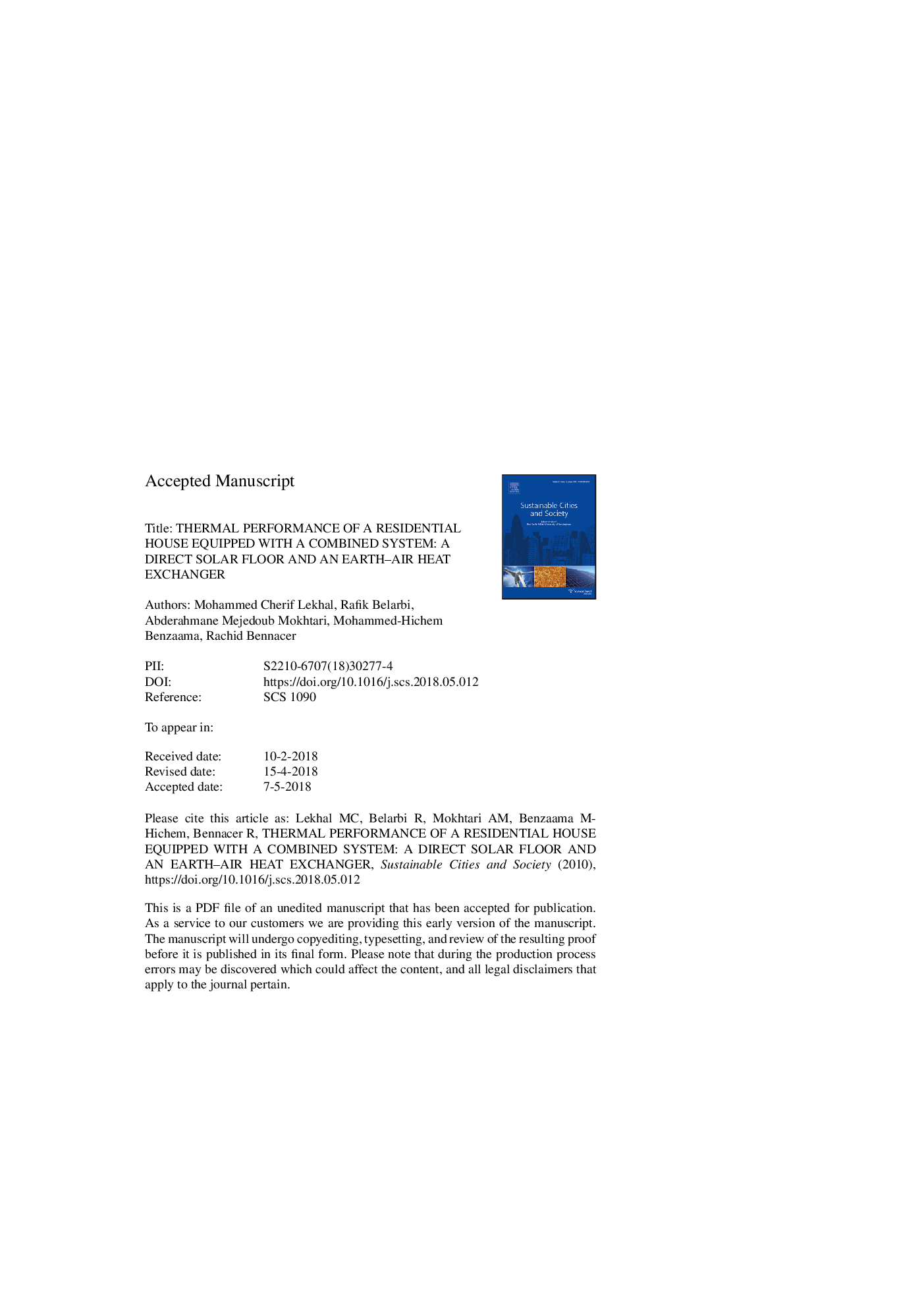| Article ID | Journal | Published Year | Pages | File Type |
|---|---|---|---|---|
| 6774879 | Sustainable Cities and Society | 2018 | 42 Pages |
Abstract
Combining solar and geothermal technologies for heating and cooling spaces is the most appropriate means to ensure an acceptable level of thermal comfort all year round with optimum energy consumption. This paper investigates the efficiency of a combined heating and cooling system integrated in a residential house. The system includes a Direct Solar Floor (DSF), an Earth-Air Heat Exchanger (EAHE) and a ventilation device that ensures free cooling. The elaborated sub-system was modeled and simulated using TRNSYS software. The different components used in the developed model have been validated via experimental measurements from a test cell integrating renewable energy systems. The study took the city of Oran in Algeria as a case study for the warm temperate climate of the Mediterranean regions. A control strategy was adopted in order to synergize all system components, whether for heating or cooling conditions. The results show that combining the system with the adopted control strategy reduces by 70% and 66% respectively the energy required for heating and cooling the house, thus representing a total annual reduction of 68%. Moreover, this combined system subject to the control strategy increases the thermal comfort ratio to 84% of coziness hours during the year. This ratio is in good agreement with the specified percentages recommended by the ASHRAE standard for thermal comfort.
Keywords
Related Topics
Physical Sciences and Engineering
Energy
Renewable Energy, Sustainability and the Environment
Authors
Mohammed Cherif Lekhal, Rafik Belarbi, Abderahmane Mejedoub Mokhtari, Mohammed-Hichem Benzaama, Rachid Bennacer,
